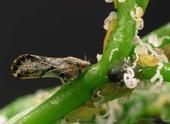
The Asian Citrus Psyllid (ACP) is a small, aphid-sized insect that poses a serious threat to California's citrus trees. This invasive pest can carry and transmit a fatal bacterial disease called Huanglongbing (HLB) to all citrus species. HLB has already decimated citrus groves throughout Florida, costing the citrus industry millions of dollars. The psyllid is currently present in Southern California, but preventative measures can keep the disease and insect from spreading to California's citrus growing regions.
What does the Asian citrus psyllid look like?
Asian citrus psyllid adults are 1/6 to 1/8 inch long with brown wings and red eyes. They feed on plants at a 45-degree angle, with their...
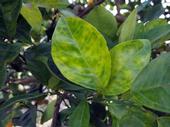
The California Department of Food and Agriculture has declared a quarantine following the detection of Huanglongbing (HLB) in multiple residential citrus trees in Corona (Riverside County). This is the first time HLB has been detected in Corona.
The 107-square mile quarantine area will link up with the east side of the existing quarantine in Los Angeles, Riverside, Orange and San Bernardino counties, creating a contiguous 1,127-square-mile area. The new portion is bordered on the north by Chino Airport, on the south by Black Star Canyon, and on the east by Interstate 15.
The quarantine prohibits the movement of all citrus nursery stock or...
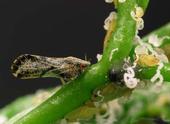
(Credit: M Rogers)
We hope by now most people have heard about and are aware of the Asian citrus psyllid (ACP), a small brown insect that carries a deadly citrus disease called huanglongbing (HLB), threatening all backyard citrus trees as well as the statewide citrus industry.
This insect feeds on newly developed leaves of all varieties of citrus trees and can spread the bacteria that causes HLB. The HLB disease can kill a citrus tree in as little as 5 years and there is so far no cure or remedy.
Learn more about ACP and HLB by joining the free UC Ag Experts Talk on December 5 from 3:00pm to 4:30pm. Dr. Elizabeth Grafton-Cardwell, Director of Lindcove REC and Research...
- Author: Elizabeth E Grafton-Cardwell
- Editor: Elaine Lander
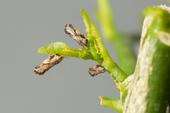
(Credit: M. Lewis, CISR)
[This post has been modified from the article originally published in the Fall 2018 issue of the Retail Nursery and Garden Center IPM News.]
The Asian citrus psyllid, Diaphorina citri, is a tiny, mottled brown insect about the size of an aphid (Figure 1). This psyllid feeds on all varieties of citrus and some related ornamental plants like orange jessamine. It damages citrus leaves by feeding on new leaf growth, causing the leaves to...
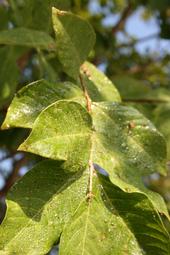
Are you seeing cars, sidewalks, driveways, or other plants covered in sticky stuff, especially those under trees? This sticky substance, called honeydew, is produced by certain insects that excrete it when they feed on plants. Plant leaves look shiny and honeydew may be so thick that it drips off the leaves onto the ground or other plants underneath. And in some cases, a black, powdery fungus called sooty mold grows on it, causing the plant's leaves to look dirty.
We've written about quite a few of the insects that produce honeydew in our blog, so here is a list of the possible culprits that may be causing the mess this time of year:
Aphids
The hackberry woolly aphid is a major pest on


